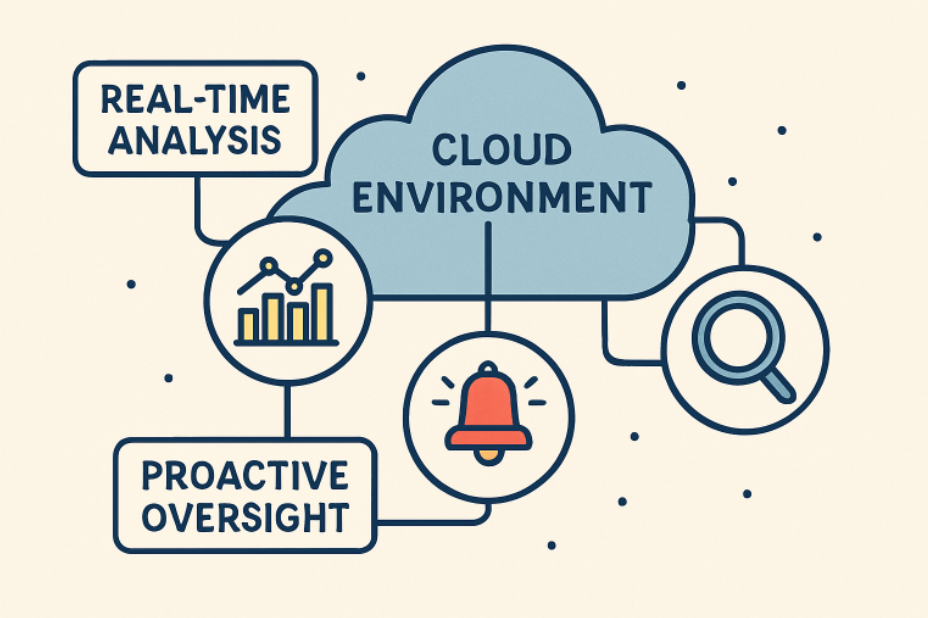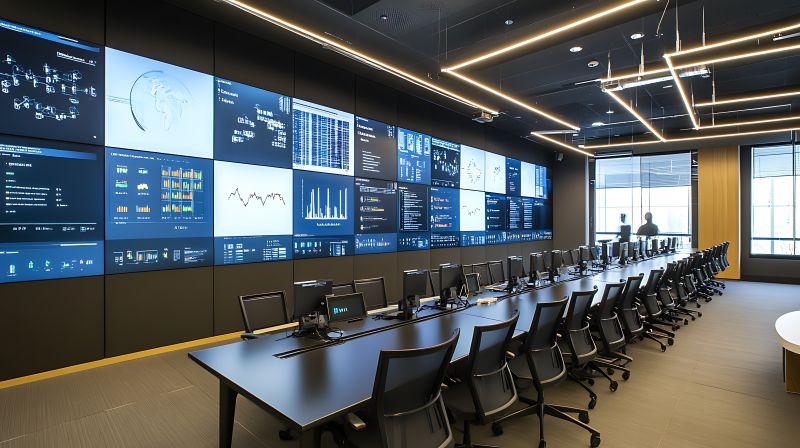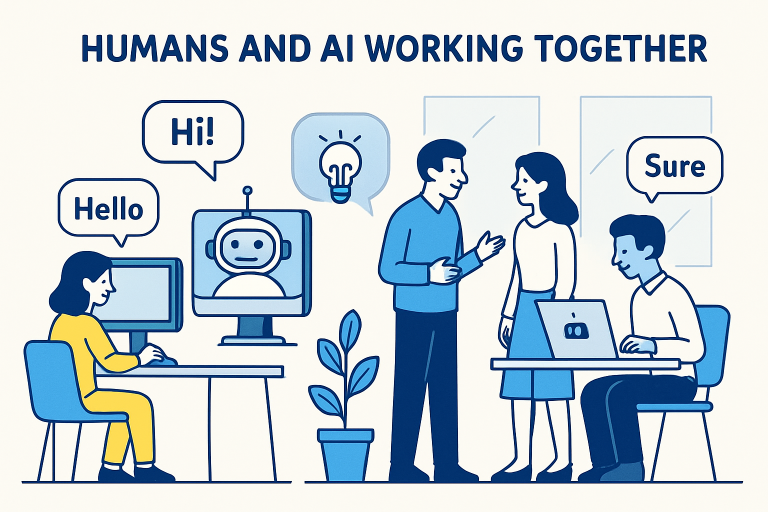Tech
Proactive Cloud Monitoring Strategies for Modern IT Environments

Introduction
In today’s digital-first era, IT infrastructure’s resilience, efficiency, and reliability are more critical than ever before. With businesses relying heavily on cloud platforms to manage mission-critical workloads, even minor disruptions can have far-reaching impacts on user experience, revenue, and reputation. Organizations are increasingly investing in proactive cloud monitoring strategies to address these challenges that empower teams to identify, predict, and preempt issues before they escalate. Leveraging intelligent solutions such as AWS monitoring allows IT teams to keep a finger on the pulse of their cloud environments and safeguard both performance and security in real time.
Unlike traditional monitoring that often reacts to already-occurring incidents, proactive cloud monitoring strategies help teams anticipate trouble and implement fixes before disruptions arise. By implementing continuous monitoring, real-time analytics, and AI-driven insights, IT departments can minimize downtime, streamline operations, and enhance end-user satisfaction—all while optimizing the scalability and resilience that cloud platforms make possible.
This holistic approach drives value at multiple levels. It shields revenue streams from unplanned outages and helps maintain compliance and security requirements across complex deployments. Modern cloud infrastructures demand a sophisticated blend of automation, real-time analytics, and intelligent alerting to manage the increasing velocity, volume, and variety of performance data in today’s environments.
Particularly within multi-cloud and hybrid setups, comprehensive monitoring surfaces opportunities for optimization, highlights emerging risks, and simplifies robust governance for cloud-native and legacy applications. The result is a dynamic, future-ready IT foundation supporting innovation and growth.
Understanding Proactive Cloud Monitoring
Proactive cloud monitoring refers to analysing cloud environments in real time to detect warnings and risks before they impact core business services. By harnessing automation, machine learning, and advanced analytics, proactive monitoring provides continuous visibility into every infrastructure layer—from compute and storage to databases and network layers. This shift from a reactive stance significantly reduces mean time to resolution (MTTR), increases uptime, and gives organizations a competitive edge in delivering seamless digital experiences.
Proactive strategies are tailored to steadily scan performance trends, highlight unusual behaviours, and prompt corrective actions at the earliest sign of impending issues. This monitoring approach proves invaluable for organizations with distributed, fast-growing, or dynamic cloud deployments. It ensures that potential performance bottlenecks, security vulnerabilities, or configuration drift are promptly flagged and remediated, all while supporting business continuity.
 Key Components of Effective Monitoring
Key Components of Effective Monitoring
- AI-Driven Anomaly Detection: Leveraging artificial intelligence and machine learning to spot subtle, otherwise undetectable deviations from established norms in data and performance patterns.
- Baseline Performance Metrics: Defining key thresholds related to resource usage and system responsiveness to help identify performance drift early.
- Real-Time Intelligent Alerting: Ensuring automated, context-rich notifications reach the right teams via the most efficient communication channels.
- Resource Optimization: Continually adjusting resources to eliminate overprovisioning or under-provisioning across the cloud estate for cost savings and performance stability.
- Security Enhancement: Automating detection and remediation of risks, vulnerabilities, or compliance gaps within the cloud environment.
Implementing AI-Driven Anomaly Detection
AI-driven anomaly detection is one of the most powerful evolutions in cloud monitoring. These systems utilize machine learning algorithms to sift through telemetry streams, application traces, and event logs, identifying deviations that could signal an upcoming outage, performance drop, or security incident. Artificial intelligence can correlate signals across distributed systems and surface issues far earlier than manual or traditional threshold-based methods allow for large-scale IT environments. Leading cloud providers and third-party solutions now deliver AI-centric monitoring functions that empower IT and DevOps teams to make critical decisions faster and more accurately.
Establishing Baseline Performance Metrics
Baselining defines what “normal” operation looks like for each application, service, or infrastructure component. By studying historical data to establish metrics—such as average CPU load, typical response times, storage IOPS, and network throughput—teams can quickly spot when a service drifts outside expected parameters. These benchmarks serve as a reference point to assess ongoing performance and to set thresholds for intelligent alerting. Periodically revisiting and updating these baselines ensures monitoring remains tuned to evolving business and technical needs, especially as new workloads or services are added to the cloud environment.
Real-Time Intelligent Alerting
Modern cloud monitoring demands instant, targeted notifications for swift incident response. Real-time intelligent alerting uses dynamic thresholds, historical context, and dependency mapping to ensure that the right personnel are notified—without overwhelming them with alert noise. Integrations with chat tools, ticketing platforms, and mobile devices mean alerts can trigger collaborative incident response and automated remediation workflows, dramatically reducing potential downtime and customer impact.
Optimizing Resource Utilization
Cloud cost optimization remains a top priority for IT leaders, and proactive monitoring is central to achieving it. Continuous visibility into how resources are allocated and consumed enables teams to right-size instances, eliminate idle or orphaned workloads, and automatically scale capacity based on demand. This reduces operational expenses and assures that appropriate resources are always available for critical workloads. Proactive resource management is particularly valuable in complex environments where usage patterns change rapidly and where inefficiencies can have compounding cost effects over time.
Enhancing Security Posture
Security threats continue to grow in number and sophistication, making continuous security monitoring an absolute necessity for modern cloud environments. Proactive cloud security goes beyond basic logging or event detection. It involves real-time behavioural monitoring, automated detection of misconfigurations, and early identification of anomalous access patterns that might indicate a breach or policy violation. Advanced monitoring tools can automate patching, compliance checks, and even trigger dynamic policy changes in response to emerging threats.
Conclusion
Adopting proactive cloud monitoring strategies is indispensable for businesses seeking agility, security, and rock-solid performance from their IT investments. Integrating AI-driven analytics, robust baseline metrics, intelligent alerting, and continuous optimization maximizes uptime and reliability and positions organizations to take full advantage of everything the cloud offers. IT teams can better support innovation and provide consistently exceptional digital experiences by evolving from reactive troubleshooting to a constant and predictive monitoring culture.

Tech
Boosting Efficiency: Enterprise AI for Modern Companies

The rapid integration of artificial intelligence (AI) into enterprise environments is driving a revolution in organizational performance and strategy. With the increasing demand for faster and more innovative business processes, AI software for enterprise companies has emerged as a fundamental component in digital transformation roadmaps. As organizations adapt, AI unlocks new opportunities for efficiency, innovation, and sustainable growth.
From optimizing internal operations to enhancing customer experiences, enterprise AI is rewriting best practices across industries. As automation and real-time data analysis become standard, forward-thinking leaders are seizing first-mover advantages while implementing robust systems to ensure competitive longevity. This shift isn’t just about technology—it’s about reshaping corporate culture, enabling more intelligent decision-making, and empowering employees to focus on higher-value activities.
As AI adoption accelerates, companies are identifying and mitigating the challenges of workforce alignment and data strategy while exploring successful implementation stories. Modern businesses are quickly realizing that incorporating AI is no longer a matter of “if,” but rather “when and how.”
In this in-depth guide, discover how enterprise AI is revolutionizing productivity, customer relationships, supply chain efficiency, and risk management—while navigating the organizational barriers and future trends poised to shape the years ahead.
Enhancing Employee Productivity
One of the most transformative powers of enterprise AI lies in its ability to shift the burden of routine work away from human employees. By automating repetitive, time-consuming tasks, workers are freed to focus on strategic, analytical, or creative responsibilities that drive greater value. A notable example is Aberdeen City Council, whose deployment of Microsoft 365 Copilot resulted in a remarkable 241% return on investment, encompassing both time savings and overall productivity, translating to an estimated $3 million annual boost.
Across industries, AI-driven tools such as chatbots, digital assistants, and workflow automation solutions reduce error rates, improve turnaround, and foster agile work cultures. Employees can now dedicate more energy to innovation, collaboration, and continuous improvement—critical for sustaining business relevance amid rapid technological change.
Reinventing Customer Engagement
AI is transforming how enterprises interact with their customers. Personalization—once a marketing buzzword—has become both scalable and hyper-relevant through AI-powered recommendation engines and virtual agents. Mastercard, for instance, has leveraged AI to streamline customer onboarding and automatically respond to key queries. This enhances both user experience and operational efficiency, eliminating delays and reducing support costs.
Through data analytics and natural language processing, enterprises deepen their understanding of customer needs and behaviors, enabling them to anticipate issues and deliver proactive, personalized solutions. This adaptability fosters trust and loyalty, solidifying long-term relationships even as consumer expectations continue to rise.
Streamlining Supply Chain Management
Managing complex supply chains is an ongoing challenge, particularly when global disruptions, regulatory changes, or shifting demand patterns are introduced into the equation. AI enables real-time data synthesis, scenario modeling, and predictive insights, helping companies synchronize activities and optimize inventory.
BSH, a top home appliance manufacturer, achieved significant supply chain transparency through advanced AI-powered solutions. By integrating planning and execution across extensive networks, BSH enhanced inventory accuracy, minimized bottlenecks, and improved overall responsiveness. Such transformations lower operational risk and build resilience against unforeseen market shocks.
Transforming Financial Services
The financial industry has embraced AI for its ability to monitor markets, automate compliance, and detect fraudulent behavior with greater accuracy than legacy systems. By analyzing massive volumes of transaction data in real-time, AI allows dynamic investment and protection strategies that adapt instantly to news and global events.
Furthermore, AI-powered advisory tools guide portfolio management, risk mitigation, and personalized financial recommendations, giving both clients and institutions a measurable edge in competitive environments. As regulations evolve, AI’s role in transparent and ethical decision-making will only expand.
Overcoming Adoption Challenges
Despite AI’s clear benefits, broad enterprise adoption often meets with organizational resistance, especially if employees feel uncertain about the technology’s impact on their roles. According to a recent survey, half of executives report that AI is creating internal tensions and challenging established cultural norms.
Effective adoption of AI requires more than just deploying new technology—it hinges on people. Organizations that succeed focus on clear change management strategies, ensuring employees understand why changes matter and how they will impact daily work. Transparent leadership communication builds trust, while continuous training equips teams with the skills needed to thrive. By prioritizing upskilling and articulating a compelling vision for AI, companies create alignment and purpose. Feedback loops allow employees to voice concerns, suggest improvements, and see their input shape outcomes. This combination fosters engagement, reduces resistance, and ensures that AI integration delivers meaningful, lasting transformation.
Future Trends in Enterprise AI
The future of enterprise AI is both promising and dynamic. Market forecasts anticipate compound annual growth rates for enterprise AI spending between 35% and 46% through 2030 as companies explore autonomous operations, generative AI, and more sophisticated cognitive services. The continued democratization of AI—fueled by open-source advancements and greater accessibility—will bring even mid-size companies into the fold.
Key trends to watch include more robust AI governance frameworks, deeper integration with cloud-native tools, and the evolution of zero-trust security models to safeguard AI pipelines. Organizations that proactively invest in skills development, data integrity, and multi-disciplinary innovation will be best positioned to flourish as the pace of change accelerates.
Enterprise AI is rapidly evolving beyond a passing trend to become an essential foundation for contemporary business operations. Organizations that strategically integrate AI—aligning advanced technologies with skilled teams and transparent governance—can optimize efficiency, enhance decision-making, and anticipate market shifts with greater precision. Beyond automation, AI fosters innovation, uncovers hidden insights, and strengthens resilience against operational and competitive challenges. By embedding AI thoughtfully into workflows and policies, businesses not only improve performance but also create scalable, sustainable systems capable of adapting to future uncertainties. In this way, AI becomes a central driver of long-term growth and strategic advantage.
Tech
Breaking Down Walls: The Integrator’s Role in Real-Time Enterprise Data

The majority of big businesses work in a technological environment that has changed over many years. Consider this scenario: your sales staff utilizes a totally different platform, your warehouse management system is a little outdated, and your finance system is 10 years old. Distinct systems, or separate islands of information, are the main obstacle to real-time understanding. When data is confined, decision processes become sluggish and prone to errors. A system integrator fills in this gap by serving as the essential architect who not only makes the connections but also completely redraws the image. They create a corporate nervous system that is synchronized and flows from disparate data silos. The five main steps an integrator takes to bring these dissimilar systems together will be broken down now.
- Establishing a Translation Layer and Unified Data Model
Establishing a universal language for all systems is the integrator’s first duty. The SI creates a master data management framework since a client may be referred to as a “Client ID” in one system and an “Account Code” in another. To ensure that everyone is in agreement on what a “customer” or “product” really means when data is transferred across platforms, this architecture has a translation layer that maps and harmonizes these disparate data elements.
- Putting Middleware into Practice for Data Orchestration
Integration middleware, a central hub, is introduced by the integrator in place of hardwiring every system to every other system. This hub serves as the translator and traffic policeman. It controls the information flow, making sure that information is not only rapidly sent but also formatted appropriately for the system that receives it. This essentially implies that there is no need for manual file transfers or reconciliation since any changes made to the inventory system are instantaneously updating the sales platform.
- Standardizing APIs
All systems, whether new or old, have safe, standardized APIs thanks to the SI. These APIs are established channels that enable dependable communication between apps. The integrator facilitates scalable, clean data sharing by substituting structured API calls for bespoke, point-to-point connections. As the business expands, preserving speed and integrity depends on this technological consistency.
- Merging the infrastructure for analytics and reporting
If the wrong people can’t see it, real-time visibility is useless. The now-unified data streams are pulled by the integrator and placed in a centralized data warehouse or analytics-specific platform. By doing away with departmental reporting, executives may now examine dashboards that pull data from the whole business, showing metrics like “Net Profit Across All Product Lines” in real time instead of in fragmented perspectives.
- Creating Workflow Automation for the Entire Enterprise
The integrator connects the triggers in one system to the actions performed in another. For instance, the SI makes sure that the system automatically initiates a series of actions when a salesperson marks a transaction as “Won” in the CRM. These actions include revising the inventory forecast, producing an invoice in finance, and establishing a work order in operations. By doing away with human hand-offs, this cross-functional workflow automation makes sure that business processes run as quickly as the data.
Conclusion
The integrator’s ability to perceive the forest and the trees is what gives them power. They provide a contemporary, unified technological framework rather than only fixing one integration point. They provide the business with the real-time clarity it needs to make quick, competitive choices by bringing different components together into a unified, fluid system. Data that is unified is just better data. By providing greater value to more customers for longer periods of time, Opkey’s partners place themselves at the forefront of business innovation in digital transformation across the enterprise app lifetime. Opkey speeds up value, lowering costs and timeframes for clients while lowering risk thanks to AI agents that guard against human mistakes. By lowering consumer costs and increasing your margins, you can optimize return on investment.
Tech
Technology Solutions Professional Skills You Need to Succeed in 2025

Technology Solutions Professional, The world of technology is evolving at breakneck speed. Every day, new innovations emerge that reshape our lives and work environments. As we head into 2025, the demand for skilled professionals in this field has never been greater. But technical knowledge alone isn’t enough to thrive; it’s the combination of professional skills that sets individuals apart.
In an industry where change is the only constant, mastering these essential skills becomes crucial for anyone looking to carve out a successful career as a Technology Solutions Professional. Whether you are just starting your journey or are well on your way, understanding what skills will be paramount can help you stay ahead in this competitive landscape.
Importance of professional skills in the tech industry
The tech industry is more than just coding and algorithms. It thrives on a diverse range of professional skills that enhance collaboration and innovation. As technology becomes increasingly integrated into daily life, the need for skilled professionals grows.
Technical expertise alone isn’t enough anymore. Employers seek individuals who can think critically and adapt quickly to new challenges. The ability to pivot in response to changing technologies makes a significant impact.
Moreover, communication plays a crucial role in bridging gaps between teams. Effective dialogue fosters understanding among technical experts and non-technical stakeholders alike. This synergy drives projects forward while ensuring everyone is aligned with goals.
In this fast-paced landscape, those equipped with strong professional skills are better positioned to seize opportunities. They contribute not only through their knowledge but also by nurturing relationships that propel organizations ahead in the competitive market.
Top 5 essential professional skills for success in 2025
As we move toward 2025, the tech landscape is shifting rapidly. Professionals must adapt to stay ahead.
First on the list is adaptability. Embracing change allows technology solutions professionals to navigate new tools and methodologies effectively.
Next, effective communication holds immense value in our increasingly virtual workplaces. Clear discussions lead to smoother collaborations and improved project outcomes.
Critical thinking emerges as another crucial skill. The ability to analyze complex problems enables tech experts to devise innovative solutions that stand out.
Equally important is resilience. Challenges will arise, but a strong mindset helps professionals overcome setbacks with poise and determination.
Continuous learning cannot be overlooked. Staying updated on industry trends ensures relevance in an ever-evolving field filled with opportunities for growth and innovation.
Adaptability and resilience in a constantly changing landscape
In the tech industry, change is the only constant. New technologies emerge daily, altering how we work and interact. To thrive as a Technology Solutions Professional, adaptability becomes essential.
Embracing change means more than just keeping up with trends. It requires a mindset that welcomes challenges and views them as opportunities for growth. Resilience plays a crucial role here; it’s about bouncing back from setbacks and learning from failures.
A flexible approach enables professionals to pivot when necessary. Whether it’s shifting project goals or adopting new tools, those who adapt quickly find themselves ahead of the curve.
Cultivating resilience fosters confidence in one’s abilities to navigate uncertainties. When faced with obstacles, resilient individuals can maintain focus on solutions rather than problems, paving their way toward success in an unpredictable environment.
Effective communication and collaboration in virtual environments
Effective communication is vital in the tech industry, especially as remote work becomes more prevalent. Technology Solutions Professionals must master various digital tools to convey ideas clearly and efficiently.
Virtual meetings often lack the nuances of face-to-face interactions. Therefore, it’s essential to be concise and direct while also being mindful of tone and body language via video calls. Using visual aids can enhance understanding during discussions.
Collaboration thrives on transparency. Regular updates through shared platforms keep everyone informed and engaged. Encouraging feedback fosters a sense of teamwork that transcends physical barriers.
Emotional intelligence plays a pivotal role too. Understanding team dynamics helps build rapport despite geographical distances. Acknowledging contributions cultivates an inclusive atmosphere where creativity flourishes, leading to innovative solutions for complex problems.
Critical thinking and problem-solving abilities for complex challenges
Critical thinking is an invaluable skill in the tech landscape. It allows professionals to analyze situations from various angles deeply. This kind of analysis leads to innovative solutions that address complex challenges.
Tech environments often present multifaceted problems, requiring a keen ability to dissect the issue at hand. Professionals must assess data critically and weigh different variables before reaching conclusions.
Problem-solving goes hand-in-hand with critical thinking. The ability to devise effective strategies quickly can set a technology solutions professional apart. It’s not just about identifying what’s wrong; it’s about crafting actionable steps toward resolution.
Moreover, fostering creativity within this framework enhances problem-solving efforts. A fresh perspective can lead to unexpected breakthroughs, helping teams navigate obstacles efficiently while driving progress forward in their projects.
Continuous learning and upskilling to stay relevant
The tech industry never stands still. Innovations emerge daily, reshaping tools and processes. To thrive as a Technology Solutions Professional, staying updated is non-negotiable.
Continuous learning isn’t just a trend; it’s essential. Embracing new technologies can open doors to exciting opportunities. Online courses, webinars, and workshops provide valuable resources for expanding your skill set.
Upskilling goes beyond acquiring knowledge; it’s about applying what you learn in practical scenarios. Engage in projects that push your boundaries and challenge your thinking.
Networking with other professionals also plays a crucial role. Sharing insights can enhance understanding of emerging trends and best practices within the industry.
Cultivating a mindset geared towards growth makes adapting easier when faced with change. The more versatile you are, the better equipped you’ll be to tackle whatever comes next in this dynamic landscape.
Conclusion: Embracing professional skills for a successful future in technology
The future of technology is bright and full of possibilities. As we approach 2025, the demand for skilled professionals in the tech industry will only increase. Embracing essential professional skills can set you apart as a Technology Solutions Professional.
Adaptability will be crucial as new technologies emerge rapidly. The ability to pivot and adjust your strategies is invaluable in this fast-paced environment. Equally important are effective communication and collaboration skills, especially as remote work continues to thrive.
Critical thinking will empower you to tackle complex challenges head-on. Problem-solving abilities will not just help you find solutions but innovate new approaches within your field. Continuous learning should become part of your daily routine; upskilling ensures that you remain relevant amid shifting trends.
As the landscape evolves, so too must our skill sets. By focusing on these core competencies, you’ll position yourself for success in an ever-changing world fueled by technology advancements.
Embrace these professional skills wholeheartedly—they’ll pave your path toward a rewarding career in technology solutions.
-

 TOPIC1 month ago
TOPIC1 month agov4holt: Revolutionizing Digital Accessibility
-

 TOPIC4 months ago
TOPIC4 months agoMolex 39850-0500: An In-Depth Overview of a Key Connector Component
-

 TOPIC1 month ago
TOPIC1 month agoMamuka Chinnavadu: An Exploration of Its Significance and Cultural Impact
-

 TOPIC2 months ago
TOPIC2 months agoGessolini: Minimalist Aesthetic Rooted in Texture
-

 TOPIC4 months ago
TOPIC4 months agoDorothy Miles: Deaf Poet Who Shaped Sign Language
-

 TOPIC3 months ago
TOPIC3 months agoArnav Deepaware: A Rising Computer Scientist and Innovator
-

 TOPIC4 months ago
TOPIC4 months agoManguonmienphi: Understanding the Concept and Its Impact
-

 TOPIC4 months ago
TOPIC4 months agoNomurano: Lifestyle Aesthetic Shaping Sustainable Simplicity
